I have been covering the war in Gaza for more than a year. I watched when the first hospital was raided. I sat with those who sought safety there, sheltering themselves in a single room out of fear, not knowing if it would be their last night. I watched as people made TikToks from rooms they were being gassed in, begging for help and sending their location to anyone who could assist. I have seen children scramble for food and wither away in areas where they can’t even try. I have seen more dead children than I can count. Weeping fathers, mothers who have no hope left in this world, and children who are ready to die rather than live another day in the depths of the hell that Israel has created. I watched as the unit approached Hind while she sat in the car, and I wept with the world as we listened to her calls for help and her final pleas.
I watched the IDF strap a man to the roof of a tank and use him as a human shield. I have seen the IDF allow a dog to attack a man, and I have watched another man raped to death by his captors. Children without limbs and without parents to help them process anything. I have watched as they have starved them, denied them their basic human rights, and killed them with as much plausible deniability as they could muster.

I have endured being a witness to these atrocities as I watched my sweet friend Lena, a Muslim woman who befriended a Jew in a time when Zionists were using our religion as a scapegoat for their behavior. She collected the remains of her home, braved life close to the evacuation point by herself with only her twin toddlers, in hopes that we could raise money to help her cross the border. I spoke with her husband as he thanked me for doing what I could to help his family. I saw Lena endure displacement after displacement before returning to her family with no hope of crossing the border. Then I saw that very “safe zone” bombed on a continual basis.
While having the internet so readily available in the beginning, we had an opportunity to talk sometimes for hours each day. Then the Israelis started to use the internet as a tool, and internet darks would encroach on my ability to reach Lena. Every one of those moments was agony as I waited to hear if she was dead or alive. Moments of uncertainty filled my mind with their faces, images of their bodies, forever lurking as I waited to hear. The hours, sometimes turning into days, where I find myself scrolling through the pages of all those seeking to hold accountability. Where I check the list of the dead, where I compare pictures of her smiling children next to the dead… just to make sure it isn’t her, it isn’t her children. This is what I must do until I can breathe a sigh of relief when I finally hear from her again.
As I watched the children being burned alive, more hospitals attacked, and UN workers killed, the American government was trying to run an election. Despite everything we witnessed from the window to the outside world, we were still being told, “You must vote for this, no matter what, vote for this.”
Election-Year Politics
In 2016, an unsuccessful campaign attempt with Hillary Clinton, in which the Democratic National Convention, DNC, was exposed to be participating in fraud to ensure Presidential Nominee Bernie Sanders would not win the bid, paired with her clear and obvious attempt to shut out the progressive left and her campaign running almost entirely on, “I am not Donald Trump,” led to the United States electing Donald Trump as their President. While Hillary Clinton had won the popular vote, the electoral college would surpass the people and hand the presidency to Republicans.
After four years of what many Americans considered a rollback in values, policies, and laws, women would see their bodily autonomy stripped. Immigration policy would become so severe in some states that places such as Texas were placing buoys throughout their waters with razors that would not only drown individuals attempting to get into our country but bleed them out as well. If one way didn’t kill them, the other way was equally likely.
White supremacists began marching through the streets again, emboldened by the behavior of President Donald Trump. Police brutality would target the Black community, killing Breonna Taylor and George Floyd, sparking protests in support of America’s Black community and stretching to the concrete walls of Palestine. It seemed as though the last remnants of colonization, racism, and oppression would rear their ugly heads again.
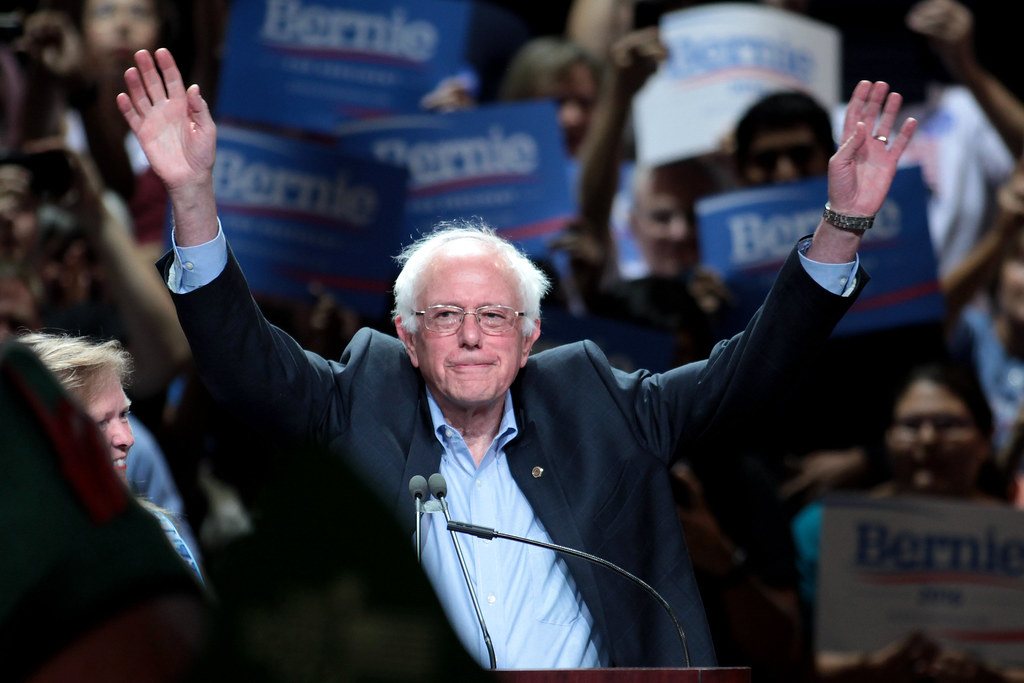
In 2020, Bernie Sanders would again step up to the plate, running an incredibly successful campaign, when the DNC would yet again swoop in. This time with former Vice President Joe Biden. Running off of the likability that he had earned as President Barack Obama’s sidekick, the promise to women to restore autonomy over our bodies, pack the Supreme Court, and start dealing with student loan debt—oh, and running under the idea that he would likely only seek the presidency for one term as he too saw the need to pass the baton to younger generations.
However, the next four years proved to show little to no change for the American people. President Joe Biden had not codified Roe v. Wade, had not gotten any kind of student loan forgiveness passed, and now, one year prior to his election, President Joe Biden would greenlight the flow of weapons to Israel as they began their systematic cleansing of the Palestinian people. That genocide would become one of the determining factors of the 2024 presidential elections.
The Republican Party, in the four years of President Joe Biden’s administration, had not managed to establish a new face for the Republican Party. Following the President’s attempt to prevent a peaceful transfer of power and establish a coup, names such as Marjorie Taylor Greene and Lauren Boebert would continue to keep Donald Trump’s name within the halls of government, refusing to accept his loss.
During this time, ByteDance’s new app, TikTok, a short streaming video service that allowed users from across the globe to reach out in a way that would be promoted solely by algorithm. France, Europe, or Australia—you would find people that match your interests. Older generations during the Covid pandemic would bring an array of generations to the app. As the years progressed, politics began to find its own place within the short video streaming app, and election campaigns would seek to leverage it.
TikTok had allowed not only individuals such as myself reporting on the events to watch firsthand accounts, but it also allowed millions of other Americans to watch the atrocities play out day after day. In a country where the weaponization of the Holocaust had become part of the daily lives of every Jew, if not every American, the words “never again” reverberated throughout the morality of so many.
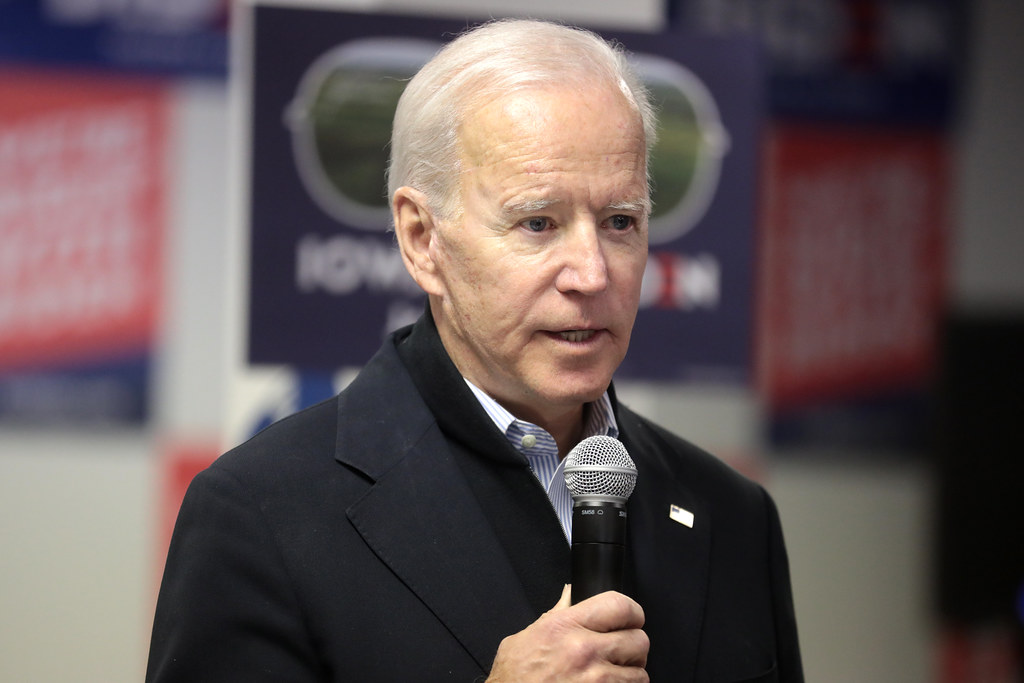
In an unprecedented move, President Joe Biden would step away from the election trail just four short months prior to the election. In a blow to the Democratic constituents who had not been provided an opportunity to share their voices, the DNC appointed Vice President Kamala Harris to be the Democratic nominee, taking democracy out of the Democratic Party.
Furthermore, as TikTok provided individuals with a window into Gaza, the Democratic Party’s response to the ongoing genocide was leaving many of their progressive left supporters in the dust. Harris decided that her best campaign option would be to court the moderate middle. In fact, in a news interview, one of her advisors stated that so many individuals would be disenfranchised by Trump that for every one progressive left they lost, they would pick up two moderates. The DNC had returned to the 2024 elections with the same energy and enthusiasm that Hillary Clinton brought in 2016. Her failure to address one of her largest guaranteed voting blocks would ultimately cost her the election.
More than one week post-elections, tensions are running high. Former President and now, President-Elect Donald J. Trump has been settling into his landslide victory. He has already made several key appointments for his new administration. He has chosen Susie Wiles as his chief of staff, making her the first woman in U.S. history to fill the role. Trump is expected to nominate Sen. Marco Rubio of Florida as secretary of state. He has also announced GOP Rep. Matt Gaetz of Florida as his pick for attorney general. Additionally, Trump has offered the job of U.S. ambassador to the United Nations to Rep. Elise Stefanik.
Matt Gaetz’s nomination as attorney general has raised concerns due to his controversial past and ongoing investigations. If confirmed, Gaetz could influence the Justice Department’s direction, potentially leading to significant changes in how laws are enforced and interpreted. Marco Rubio’s potential role as secretary of state could shift U.S. foreign policy, especially given his strong stance on China. Elise Stefanik’s appointment as U.N. ambassador could impact U.S. relations with the international community, given her staunch support for Trump’s policies.
These appointments reflect Trump’s commitment to surrounding himself with loyalists who align with his vision, which could lead to significant shifts in both domestic and foreign policies.
Political Dynasties and the Rise of Groupthink
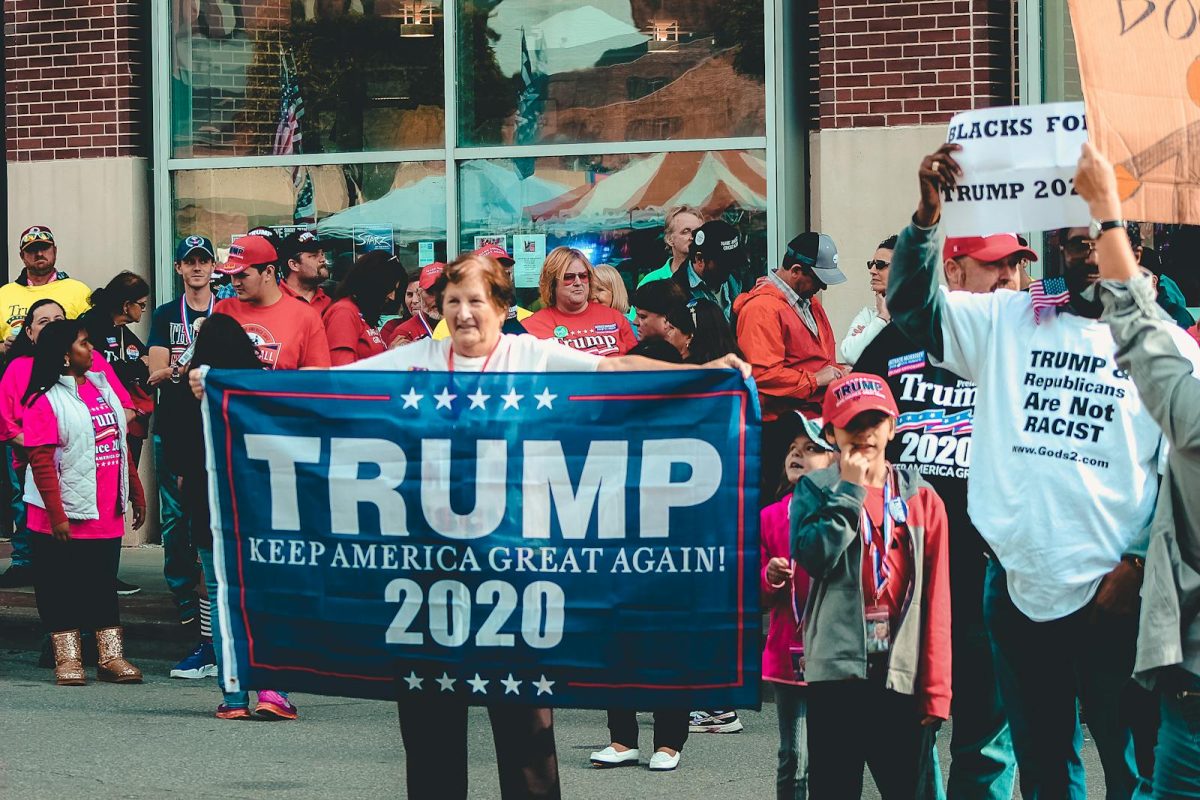
Throughout all of the campaigns, each side has had varying responses. On January 6, 2021, President Donald Trump attempted to prevent a peaceful transfer of power to the newly elected Joe Biden. He called on his constituents to adorn themselves in their MAGA gear, Confederate flags, and camo, and to arrive ready to take the Capitol. The day resulted in a violent and unprecedented attack on the U.S. Capitol, which left five people dead and many others injured.
In the weeks leading up to January 6, Trump repeatedly encouraged his supporters to show up for a “big protest” in Washington, D.C., on the day Congress was set to certify the Electoral College votes. At a rally on January 4, Trump told supporters, “We’re going to take what they did to us on Nov. 3. We’re going to take it back.” On the day of the riot, Trump addressed his supporters, saying, “We’re going to walk down to the Capitol, and we’re going to cheer on our brave senators, and congressmen and women. We’re probably not going to be cheering so much for some of them because you’ll never take back our country with weakness. You have to show strength, and you have to be strong.”
Thousands of Trump supporters, waving Trump or Confederate flags and wearing MAGA gear, descended upon the Capitol. They overwhelmed law enforcement, pushed past police barricades, and temporarily stopped Congress from counting electoral votes. The riot resulted in the deaths of five people, including Capitol Police Officer Brian Sicknick, who died from injuries sustained during the attack. Additionally, two other officers who responded to the riot later died by suicide.
The aftermath of the January 6 riot saw more than 1,500 people charged in connection with the attack, with hundreds of convictions and ongoing prosecutions. Trump has continued to defend the rioters, calling them “unbelievable patriots” and promising to pardon many of them if he returns to office.
The attack led to Trump’s second impeachment, making him the first U.S. president to be impeached twice. The House of Representatives charged him with “incitement of insurrection,” but he was acquitted by the Senate. The riot also prompted increased security measures at the Capitol and a broader national conversation about the state of American democracy and the dangers of political extremism.
Democrats stood by in awe as they watched the groupthink take over what many had coined the MAGA cult. They displayed behaviors often associated with belonging to a cult, such as unwavering loyalty to a single leader, rejection of outside information, and a strong sense of us-versus-them mentality. This phenomenon was particularly evident during the January 6th Capitol riot.
The intensity and scale of the MAGA cult’s actions have brought renewed attention to the dangers of unchecked groupthink and the importance of critical thinking and independent judgment in a healthy democracy.
Democrats took to social media platforms, not only condemning the groupthink but also promising to hold their candidate accountable should they make any of the errors that President Donald Trump had made. Prominent Democratic figures, including Alexandria Ocasio-Cortez and Bernie Sanders, emphasized the importance of maintaining democratic principles and ensuring that their party does not fall into the same patterns of blind loyalty and misinformation.
This behavior is not unique to the MAGA movement; it can be seen in various forms throughout history and across political spectrums. In fact, the very Democrats that had admonished Red MAGA would go on to display many of those groupthink behaviors with the exit of President Joe Biden and the appointment of Vice President Kamala Harris.
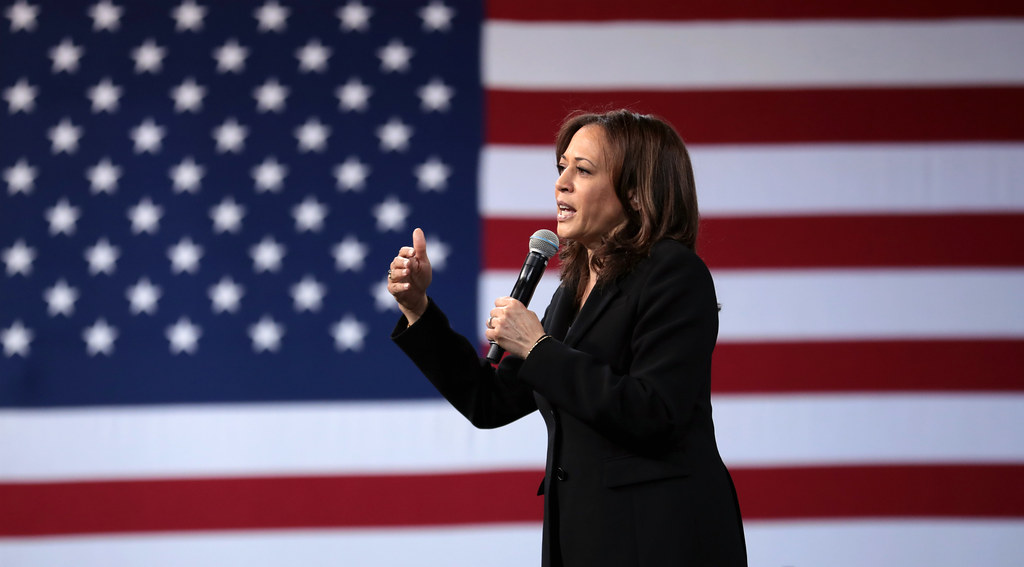
In the months leading up to the departure of President Joe Biden, individuals had come together to demand his departure, fearing his ability to lead the nation for another four years and for the continued assistance of Israel’s actions in Gaza, which had taken center stage in this election. When the DNC appointed Harris, many moderate Democrats were happy to return to the Democratic Party. However, a large swath of Americans still contested that they would not vote for either candidate that was going to support a genocide.
Without an arms embargo, and with Harris’s clear departure from the middle class, 15 million Americans would stay home, in what some individuals are now calling the “Gaza Protest vote.” That being said, a large number of Americans stay home every election, and while Gaza undoubtedly played a key role, what had become more obvious was that 15 million Americans disagreed with either of the policies the candidates were offering.
The third-party candidates received less than 2% of the vote. President-Elect Donald Trump had won in such a landslide that even if every third-party voter had given their votes to Harris, Trump still would’ve won the election. Despite the math, “Blue MAGA” as they’ve been coined on social media, took to the internet looking for individuals to blame. Their rhetoric, which had been increasing in the weeks prior to the election, was now threatening, if not taking authoritative actions.
Popular TikTokers took to their pages and encouraged individuals to end the boycotts that had shown the solidarity of the people demanding an end to the atrocities and had sunk heavily into the pockets of CEOs. Videos of individuals going to Starbucks while they sipped their lattes as the sounds of screaming Palestinian children played swarmed TikTok’s algorithm. Latin Americans threatening to call ICE on their own families for voting for Trump. Jokes of purchasing beachfront property made while eating McDonald’s fries. These actions came from the very individuals who had condemned Red MAGA in previous years. The very individuals who had fought so hard against oncoming white Christian fascism had decided in their loss they would gleefully return to their oppressors and return to the very supremacist system that they claimed to want to end.
Conspiracy theories of voter fraud, Russia tampering, and talks of stopping a peaceful transfer all came from the individuals who had promised Red MAGA time and time again that they were different. They had joined them in the very same groupthink that they had so vehemently judged. From every American community, the Black community, the LGBTQIA, the disabled, it seems as though very few in America were exempt from American exceptionalism.
The phenomenon of groupthink is not new and has been observed in various forms throughout history. It involves a group making faulty decisions because group pressures lead to a deterioration of mental efficiency, reality testing, and moral judgment. The term “groupthink” was coined by social psychologist Irving Janis in 1972, and it describes the tendency of groups to conform to a consensus viewpoint without critically evaluating alternative viewpoints. This behavior was evident in the actions of both Red MAGA and Blue MAGA supporters.
In the case of the Red MAGA movement, the groupthink was characterized by unwavering loyalty to Donald Trump, rejection of outside information, and a strong us-versus-them mentality. This led to the January 6th Capitol riot, where supporters of Trump, driven by his repeated claims of a stolen election, stormed the Capitol in an attempt to overturn the results of the 2020 presidential election.
The actions of both Red and Blue MAGA supporters over the past year have demonstrated the majority of Americans’ ability and desire to participate in such groupthink. Underscoring the importance of critical thinking, independent judgment, and the need to hold leaders accountable to prevent the dangers of unchecked groupthink from undermining democratic principles.
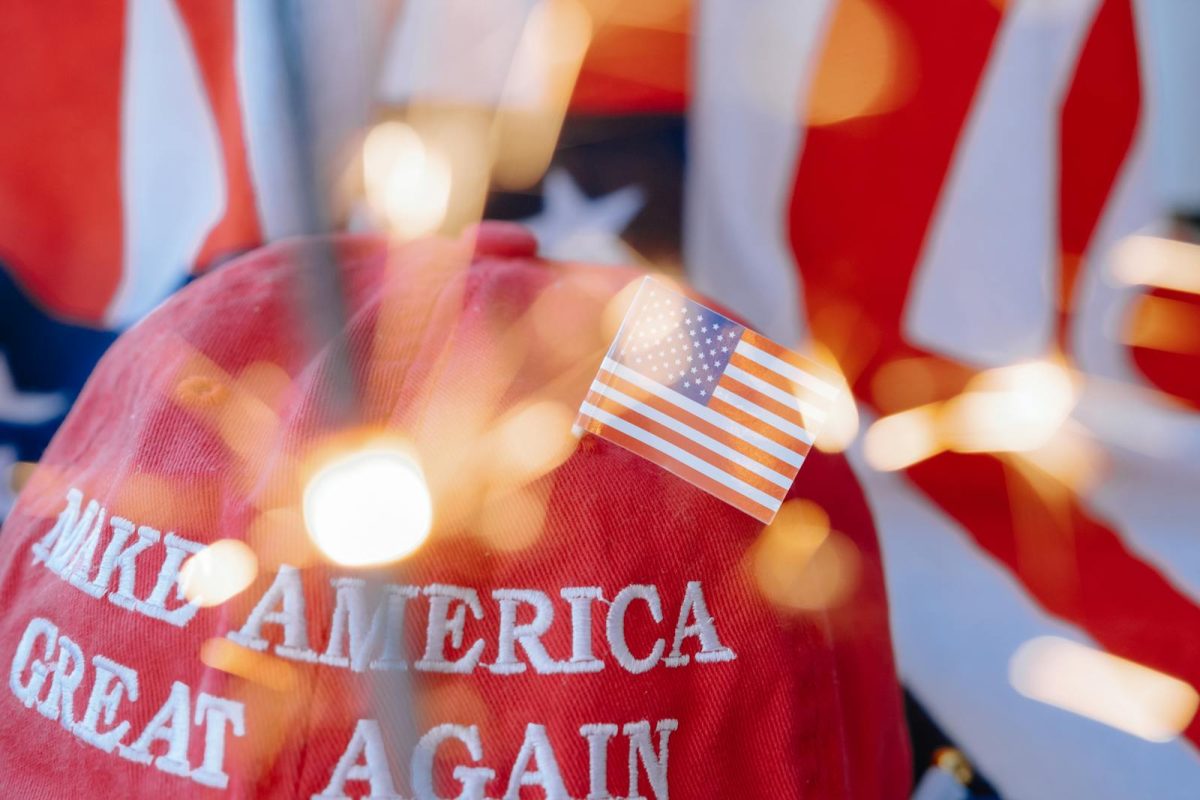
The Threat of Groupthink and Its Impact on Democracy
The political landscape in the United States has been profoundly shaped by the presidencies and campaigns of Donald Trump, Joe Biden, and Kamala Harris. Each leader has left an indelible mark on the nation’s political fabric, influencing the behavior and beliefs of their supporters in significant ways.
Donald Trump’s presidency and subsequent campaigns have been characterized by a fervent base of supporters who exhibit strong groupthink behaviors. The January 6th Capitol riot was a stark manifestation of this, where unwavering loyalty to Trump and rejection of outside information led to a violent attempt to overturn the 2020 election results. Trump’s rhetoric and actions have continued to fuel conspiracy theories and political extremism, highlighting the dangers of unchecked groupthink.
Kamala Harris’s campaign highlighted that this type of division is not limited to any one group, but rather permeates throughout American society. Despite her attempt to appeal to moderate voters, Harris faced significant criticism for not adequately addressing the concerns of progressive left supporters. The “Gaza Protest Vote” and the large number of Americans who chose to stay home during the election reflect the deep divisions with the Democratic Party, as well as within the broader electorate.
As the nation moves forward, it is crucial to recognize the importance of critical thinking, independent judgment, and accountability in preserving democratic values. The lessons from the presidencies and campaigns of Trump, Biden, and Harris serve as a reminder of the need to uphold transparency, empathy, and inclusivity in political discourse. Only by addressing these challenges can the United States hope to foster a more united and resilient democracy.





